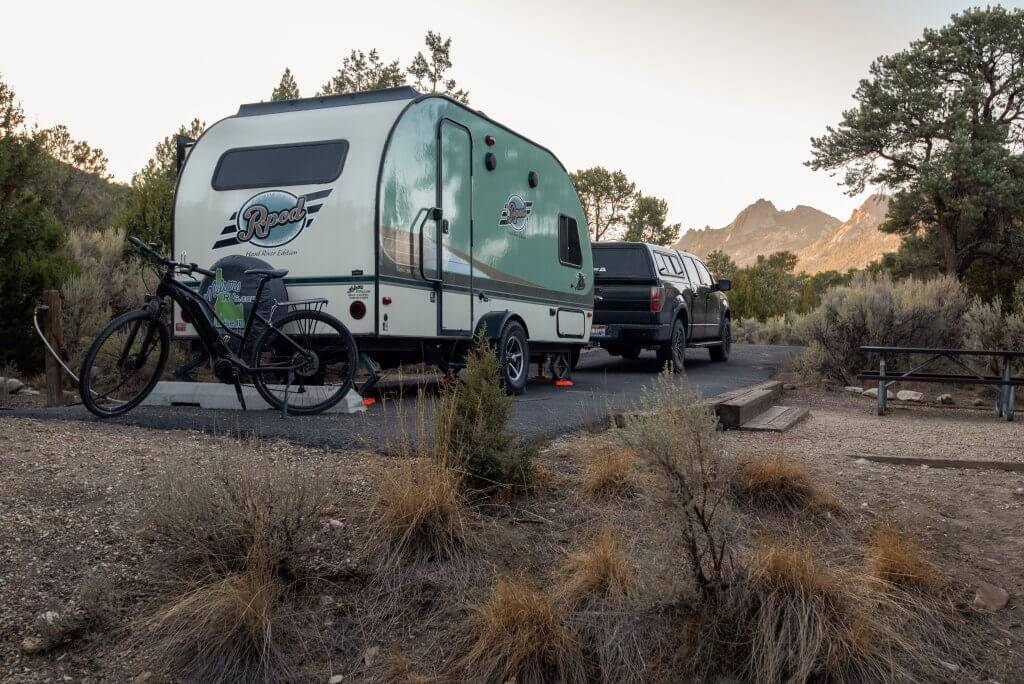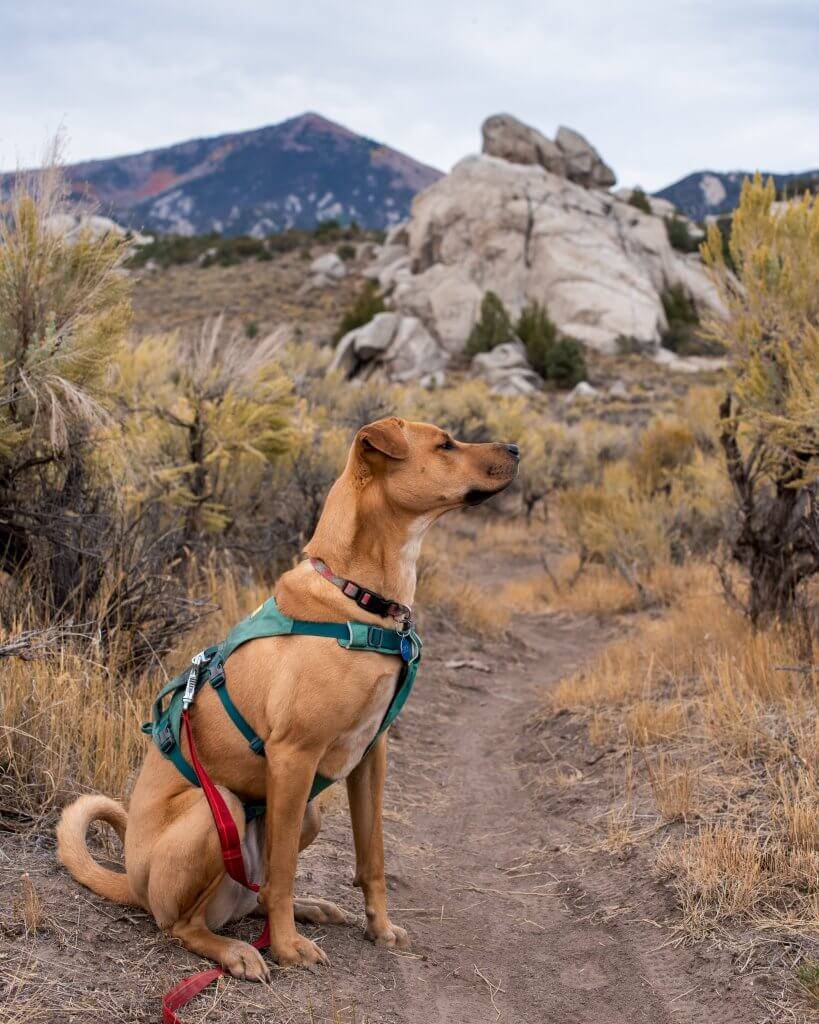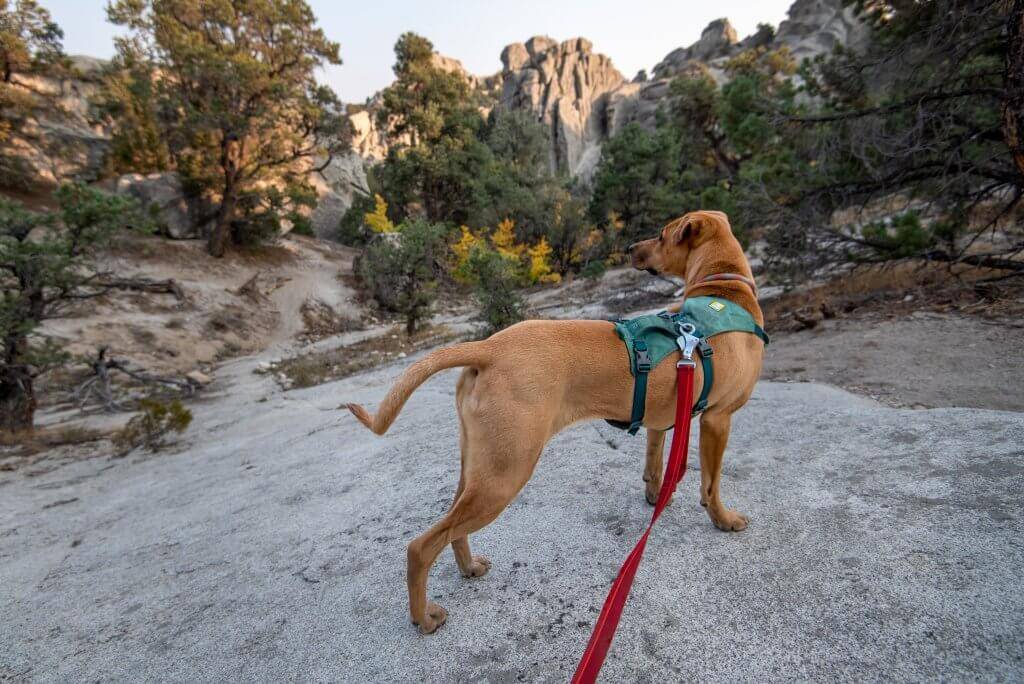Sara Sheehy worked in partnership with Visit Idaho to create this Travel Tip.
I find few things in life as perfect as Idaho’s summers. I love these long, perfectly warm days that meld into clear, star-filled nights. Nothing that good can last forever, which makes it all the sweeter while its here. When the first cold snap has me reaching for my down jacket, I set my sights to explorations in the southern part of the state, where those temperate days stretch longer into fall.
It was this desire to head south like a migrating bird that had me packing up my camper for a few days of adventure at City of Rocks National Reserve and Castle Rocks State Park. Best known as a destination for rock climbers, I wondered what a non-climber like myself would find if I kept my two feet solidly on the ground. The answer? Gorgeous trails, quiet nights by the campfire, plenty of history, and stunning views everywhere I looked.
Here’s how I explored the City of Rocks and Castle Rocks, no climbing rope required.
A Destination for Campers
Camping is the name of the game when it comes to experiencing the City of Rocks and Castle Rocks. Both parks offer camping options for tent campers and recreational vehicles.

Those with tents and smaller campers who don’t mind being out of the range of a cell tower can stay right in the action at the City of Rocks. The park offers tent-only campsites, group campsites, and campsites for RVs up to 28 feet (no hookups). During the summer, campsite reservations are available and recommended. In the off-seasons, campsites are first-come-first-served.
For those with bigger campers or who want a few more amenities (including limited cell service), make your home at Castle Rocks’ Smoky Mountain Campground. Located just outside the Almo entrance, the campground offers campsites with electrical and water hookups and flush bathrooms with showers (water service and flush bathrooms are open from May through September). Equestrian campsites are also available.
Because I work a bit when I travel, I chose to spend my nights at Smoky Mountain, nestled into a campsite in the juniper forest with beautiful views of Steinfell’s Dome.
If camping isn’t your style, check out the comfortable, western-style rooms and cabins at the Almo Inn.
The California National Historic Trail

After setting up camp at Smoky Mountain, I leashed up my dog, Cece, and went for a walk around the campground. At the northern end, I happened upon an access point to the California National Historic Trail. The California Trail, which follows in the footsteps of the over 250,000 emigrants who traveled to California in the mid-1800s, crosses right through the City of Rocks. Traces of the mass migration can be seen throughout the park, from axle-grease signatures on the granite rocks to wagon ruts on Pinnacle Pass. The section of the California Trail that passes by the campground is open to hikers, bikers, equestrians, and, to my delight, leashed dogs. Cece and I walked the trail for 1.5 miles until it reached the main road through the City of Rocks. The trail continued, going deeper into the park, but the sun was setting, and we needed to get back. Over dinner and a campfire, my excitement for exploring the park grew.
Exploring the City of Rocks

The following day, I jumped into my explorations with a bike ride through “the City,” as the City of Rocks is known. The journey began with a pedal to the park’s visitor center in Almo. The City of Rocks National Reserve and Castle Rocks State Park are cooperatively managed by the National Park Service and the Idaho Department of Parks and Recreation, so visitor center staff can provide information on both locations.
After asking for recommendations on what a non-climber like myself should see and do, I picked up a trail map covering both parks ($2) and walked the visitor center’s short interpretive trail about the California Trail. The road through the City is graded dirt and gravel, best suited for gravel bikes or mountain bikes. Pedal-assist e-bikes are allowed anywhere in the park that bikes are, including on bike-friendly trails. From Almo to Emery Pass, which lies at the westernmost edge of the park, is a 7.5-mile route that climbs 1,500-feet in elevation.

The first few miles parallel the California Trail, and I stopped to check out the reminders of emigrant life at Camp Rock, Treasure Rock, and Register Rock. Camp Rock and Register Rock are covered with dozens of axle-grease signatures from those who passed through this “Silent City of Rocks” in the 1800s. With its beautiful views across the sagebrush to the park’s rock formations, Treasure Rock is a place of legend. Rumor has it that a bandit robbed a stagecoach full of gold bullion bound for Boise in 1878 and buried the treasure here.
Continuing on my way, I left the California Trail behind. I passed the popular climbing areas of Elephant Rock, Bath Rock, Parking Lot Rock, and Bread Loaves as I climbed toward Emery Pass. Each climbing location has a walking path around its base, and I stopped to watch in awe as roped climbers scaled these gorgeous slabs of granite.

Once at the top of the pass, I paused to catch my breath and admire the landscape from this higher elevation. Trees with bright yellow and orange foliage splashed the hillsides with color. The parking lots were mostly filled with climbers and campers, but I spotted a few hikers and bikers emerging from the trailheads, too. I descended back toward Almo, stopping a dozen times to take in the panoramic views along the way. I grabbed a pastrami sandwich from Rock City Mercantile before returning to my campsite to get ready for an afternoon of hiking.
The Heart of the City
Traveling the road through the City of Rocks gives an excellent feel for the park, but it only scratches the surface. Getting into the true heart of the City, and experiencing the quiet beauty that exists between the park’s granite spires and monoliths, is best done on foot.

Leashed dogs are welcome on all of the park’s trails, so I brought Cece along for an afternoon of wandering. I parked in the Bath Rock parking lot and made my way to the start of the Creekside Towers Trail. The route quickly brought me to rock formations whose walls were folded and eroded in beautiful patterns. Geologists estimate that the oldest rock in the park is over 2.5 billion years old—literally, the crust of the Earth nudged to the surface by ancient tectonic events. But the rocks in front of me, the ones that climbers love to scale, are a younger rock called Almo Pluton. This “sticky” granite is a dream to climb, and over 700 routes for sport, multi-pitch, and crack climbing have been placed to date.

I stopped to snap a few pictures of the towers and then continued on my way. Soon, the trail intersected with the South Fork Circle Creek Trail, which led me to a narrow canyon so lush and quiet and I forgot I was only a mile from my car. You’ll find climber trails branching off to the left and right which could make less experienced hikers worried about whether they are on the right path, but if you happen to make a wrong turn, you’ll find out soon enough when you quickly dead-end at a climbable rock wall. I enjoyed taking these little detours to get closer to the rocks, but as the sun started to slip behind the rocks, I scrambled out on the aptly named Stairways Trail to return to the trailhead.
Though I didn’t have time to hike all the trails in the City, the staff at the visitor center recommended the 3.5-mile Stripe Rock Loop and the 6.8-mile City of Rocks Loop, both of which are also open to bikes and equestrians.

A Morning at Castle Rocks State Park
The City of Rocks’ northern neighbor is Castle Rocks, a 1,692-acre state park that was once a private ranch. The park has two major areas of climbable rocks, but for hikers, bikers, and equestrians, trails wind not only around the rocks but through the high desert landscape that surrounds them.

The morning was crisp and clear when I pulled into the parking lot by “The Lodge,” a century-old ranch house on the property (available for overnight stays), and strapped on my backpack. The lot was filled with mountain bikers, horses saddled up with their riders, and plenty of rock climbers. Dogs are allowed on-leash at this park, too, so Cece happily hopped out to join me.
By chance, I came across Stephen King, Park Ranger of Compliance and Climbing, early in my hike. He shared that the 5.5-mile loop around the park was in full fall color and that as soon as you get past the climbing areas, it feels like you have the place to yourself. I thanked him for the intel and continued on my way, looping around the Backyard Boulder Trail and stopping to watch climbers tackle some of the biggest walls in the park at Hostess Gully.

Foliage painted its way up on the Albion Mountain hillsides as I wandered through this quiet park. Where the City of Rocks has reminders of the California Trail in the form of axle-grease signatures and wagon ruts, Castle Rock State Park has reminders of the Shoshone and Paiute people, who, as hunters and gatherers, frequented this area in the fall to harvest pine nuts. A rock covered in faint red pictographs helps to tell the story of the tribes’ history in this region.
As I made my way back to my car, with tiny lizards skittering on the trail ahead of me and the sun shining warmly overhead, I made a promise to myself to make a habit of visiting this silent city of rocks more often and to see it in all its seasons.
Things to Know
Location: Almo is the gateway to the City of Rocks and Castle Rocks State Park. The parks are located in southern Idaho, close to the Utah border. Travel time is about three hours from Boise, 2.5 hours from Salt Lake City, and 2.5 hours from Idaho Falls.
Weather: The City of Rocks is an arid, exposed landscape with few places to shelter from hot or cold weather. Come prepared! Summer temperatures range from the upper 40s to the upper 80s, with some extreme activity on either end. Winter has lows in the teens and highs in the 30s. Spring can be wet and windy but also sunny and calm if you hit the timing just right. In the fall, when I visited, it was a perfect 65 degrees during the day and a chilly 30 degrees overnight.
Amenities: The town of Almo is small, so do your best to bring everything you need with you. If you forget an essential item, you might find it at the historic Tracy General Store, open Monday through Saturday. Other local businesses include Rock City Merchantile (whose selection of craft beer is impressive by any standard) and Durfee Hot Springs.
Cell Service: Cell service does not reach the park itself, but you’ll find coverage from AT&T and T-Mobile in Almo. Verizon has limited service.
Feature image credited to Sara Sheehy.
Sara Sheehy is a writer and photographer who travels the world seeking wild places and great stories. When she’s not on the road, Sara spends her time exploring the mountains around her home base of Sun Valley, Idaho.
Published on September 7, 2022
